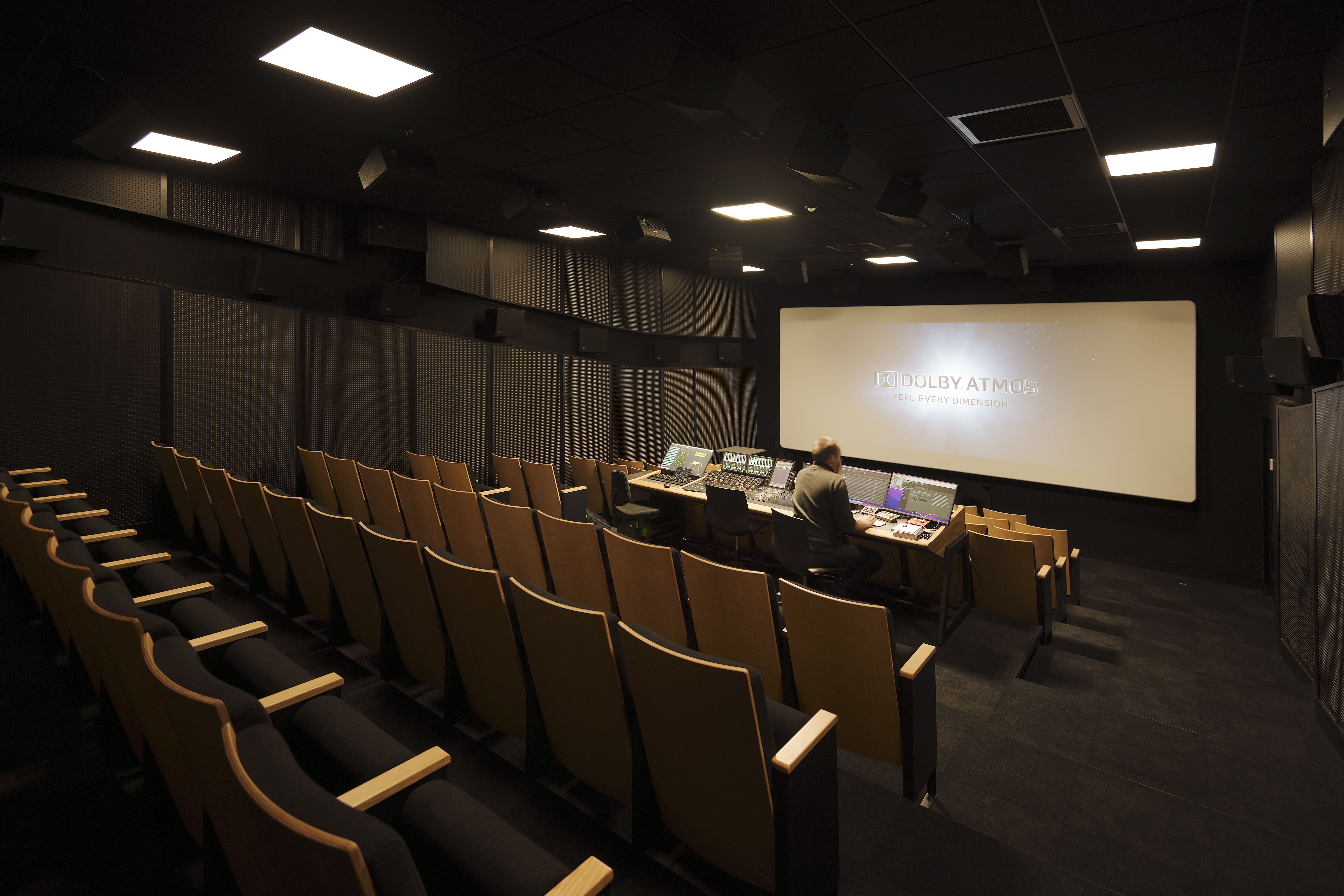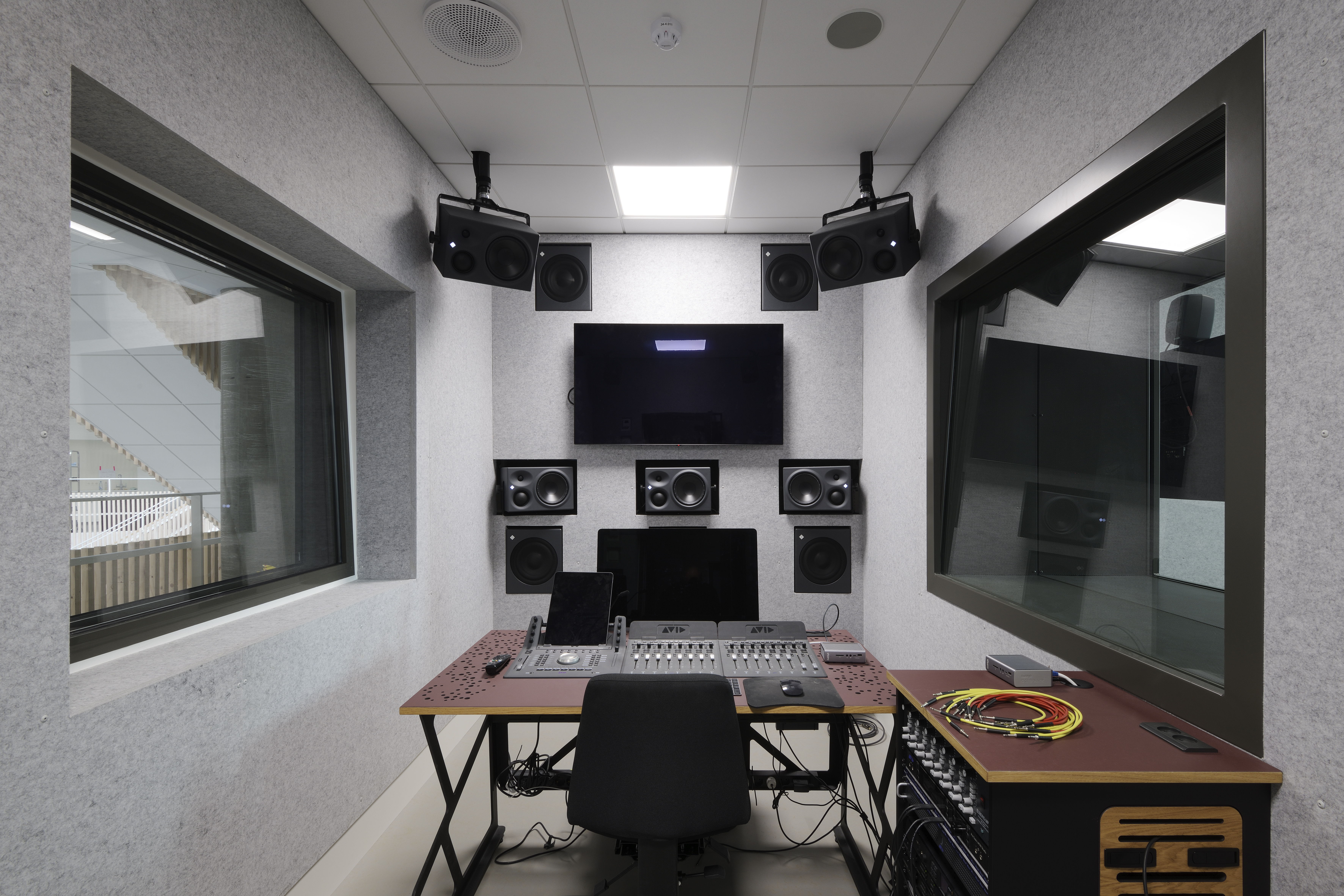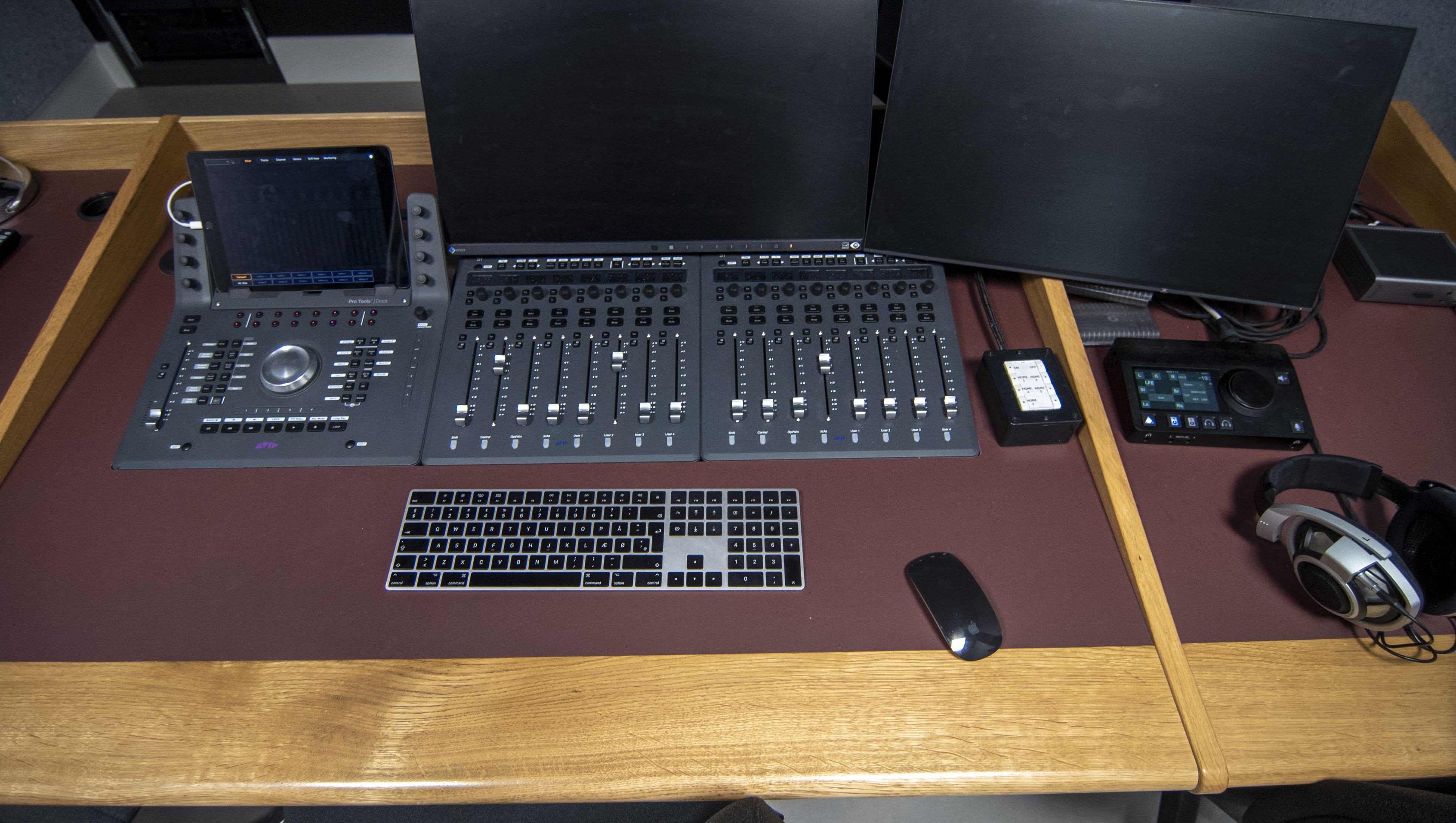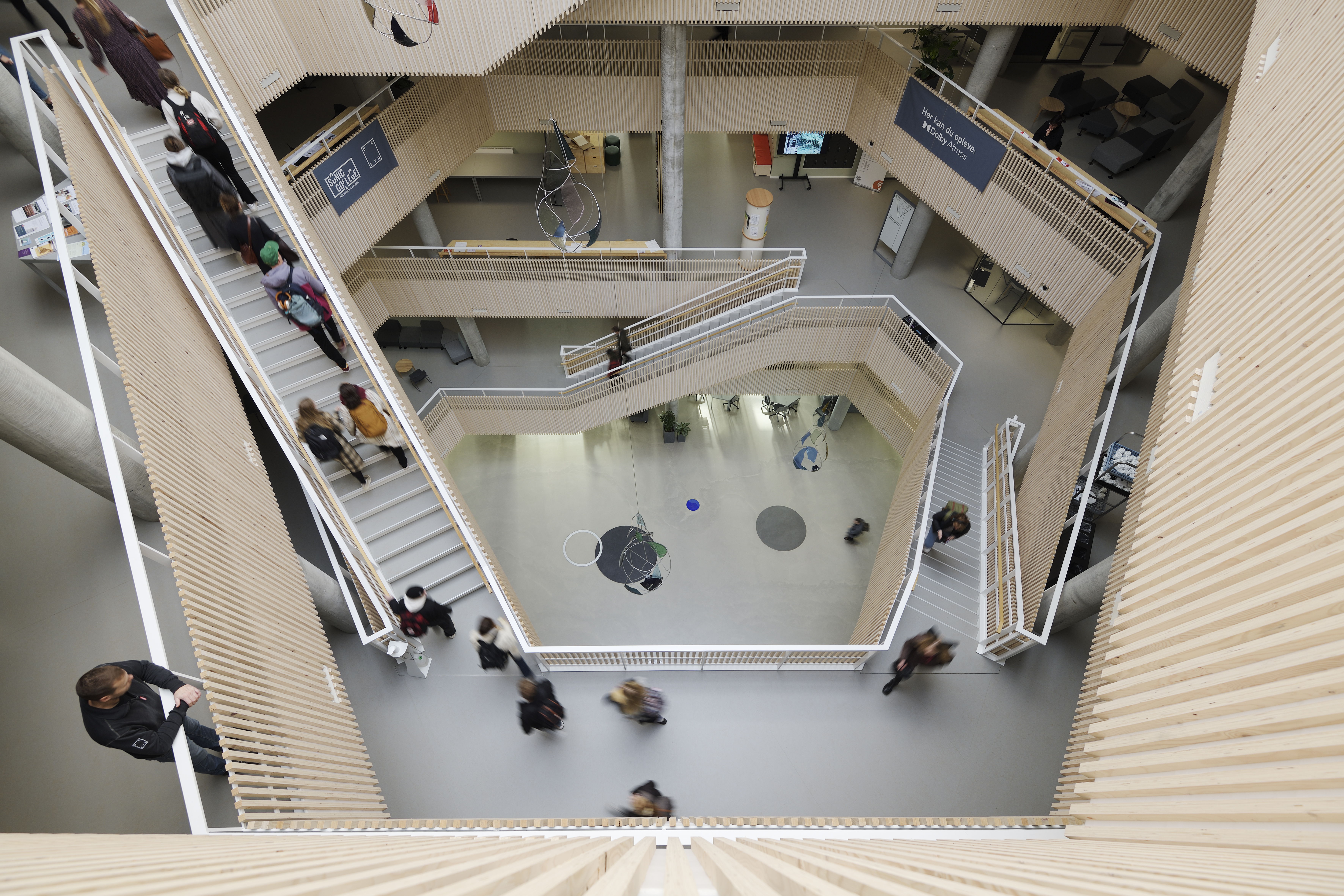Sonic College Denmark
28. elokuuta 2023

Sukellus äänisuunnitteluun Lars Tirsbækin kanssa ja Atmos-projektien kannalta keskeiset Merging Technologies -laitteet
Vuonna 2010 perustettu Sonic College on osa tanskalaista University College South Denmark -yliopistoa ja tarjoaa äänisuunnittelun ammattilaisiksi pyrkiville opiskelijoille huippuluokan opiskelupaikan, jossa he voivat hioa taitojaan ja perehtyä alan tarjoamiin lukuisiin mahdollisuuksiin. Viime syyskuussa upouudelle kampukselle muuttaneessa oppilaitoksessa opiskelijat voivat tutustua muun muassa elokuva-, televisio- ja videopelituotantoihin liittyviin erilaisiin työnkuviin ja teknologioihin. Sonic Collegessa lehtorina toimiva äänentoiston asiantuntija Lars Tirsbæk pureutuu äänisuunnittelun trendeihin, koulutukseen ja immersiivisten äänentoistoratkaisujen yleistymiseen. Oppilaitoksessa toteutetaan yhä enemmän Dolby Atmos -projekteja ja käytetään Merging Technologies -laitteita tuotantoprosessin sujuvoittamiseen.
Lisää alla englanniksi.

“As a teenager, I dreamt of being a keyboard player in a band, so my background is in music,” shares Tirsbæk. “I had taken some pre-conservatory courses, and when I applied to join the conservatory, I began to think about what I really wanted to do. I love playing music, but I also enjoyed working with synthesizers and creating sounds with things like vocal processing on stage.”
Therefore, between 2011 and 2015, he completed a programme in sound design at Sonic College. Afterwards, the programme head contacted him and asked if he wanted to teach on the same course, marking the start of his teaching career. He began as a guest lecturer in recording technologies and music production and progressed into a full-time position. When the Sonic College moved to the new campus, Tirsbæk was put in charge of the build, and studio spec and design.

The new facility boasts impressive specifications, including a Dolby Atmos dubbing stage and a cinema playback room. This setup enables students to perform sound design, mixing, and playback of theatrical content. Equipped with 40 Meyer Sound speakers, a Pro Tools setup with rendering and mastering capabilities, and an Avid console, they have everything needed for Dolby Atmos production. Additionally, there is an 80-seat cinema, a Foley stage with a Neumann system, two mastering studios, two stereo editing studios, a fully equipped recording studio, a synthesizer lab, and an immersive atrium featuring 180 loudspeakers.

Critical listening sessions are housed in purpose-built 7.1 classrooms, which accommodate up to 40 students. For monitoring and streaming, they utilize the Merging Anubis as a versatile monitor controller. It serves as a hybrid setup, allowing them to route audio inputs and outputs efficiently, including microphone feeds for online lectures via platforms like Zoom.

Tirsbæk explains some of the benefits of the Merging technology: “The Anubis caters to our college’s diverse connectivity needs, accommodating lecturers with their own sound cards and offering line inputs for additional flexibility. Its adaptability is invaluable in a sound college setting, particularly due to its network-based capabilities, which are not widely available in other controllers.”
The college’s encounter with the Anubis began in 2020 when they sought a solution for a hybrid teaching approach, combining in-person and remote learning. They required a monitor controller capable of handling multiple inputs, immersive formats, and multichannel inputs. Using AES67 and Dante devices, it’s possible to seamlessly connect various audio sources to the Anubis, allowing users to undertake different types of projects. Given the diverse needs of a sound college, the Anubis proved indispensable, offering versatility and adaptability.
Sonic College has incorporated another Anubis in the Dolby Atmos mastering suite, where it serves as a monitor controller. In this room, students work on Atmos projects for film, music, and gaming. Using a home entertainment receiver, they output 7.1.4 analogue audio into a converter and then connect it to the network. This setup allows the incorporation of an Xbox, a computer running Unity and Wwise middleware for gaming projects, and a Mac Pro running Pro Tools. Through the Anubis, students can easily switch between listening to system audio, output from the home entertainment receiver, and signals from the Dolby render unit. Additionally, the Anubis plays a crucial role as the calibration point for the entire system, facilitating tasks such as EQing, delaying, and bass management.
“The interface of the Anubis allows students to seamlessly work with immersive audio as if it were a stereo signal, remaining accommodating to the immersive age our students were born into and are used to,” observes Tirsbæk. “Outdated feature sets from a decade ago pale in comparison, where the inability to solo or mute speakers in an immersive format on a monitor controller seems unimaginable. There are some interesting things going on there and the Anubis was one of the pioneers in enabling such functionalities. Students quickly grasp its usage, appreciating its versatility and extensive feature set and we strive to ensure they grasp the full range of capabilities it offers.”

(Ends)
The high-resolution images accompanying this media release can be downloaded here.
About the Sennheiser Group
Building the future of audio and creating unique sound experiences for our customers - this is the aspiration that unites the employees of the Sennheiser Group worldwide. The independent family-owned company Sennheiser was founded in 1945. Today, it is managed in the third generation by Dr. Andreas Sennheiser and Daniel Sennheiser, and is one of the leading manufacturers in the field of professional audio technology.
sennheiser.com | neumann.com | dear-reality.com | merging.com


Michael Jääskeläinen
Sonic_College_tiedote.pdf
PDF - 3.3 Mb


